Background:
After operating with the Shuenk IS38+ turbocharger for the past four years I was getting the itch to try something different.
Shuenk mentioned that they had a prototype IS38 variant with a slightly larger compressor wheel that they were interested in obtaining compressor rotation speed data on.
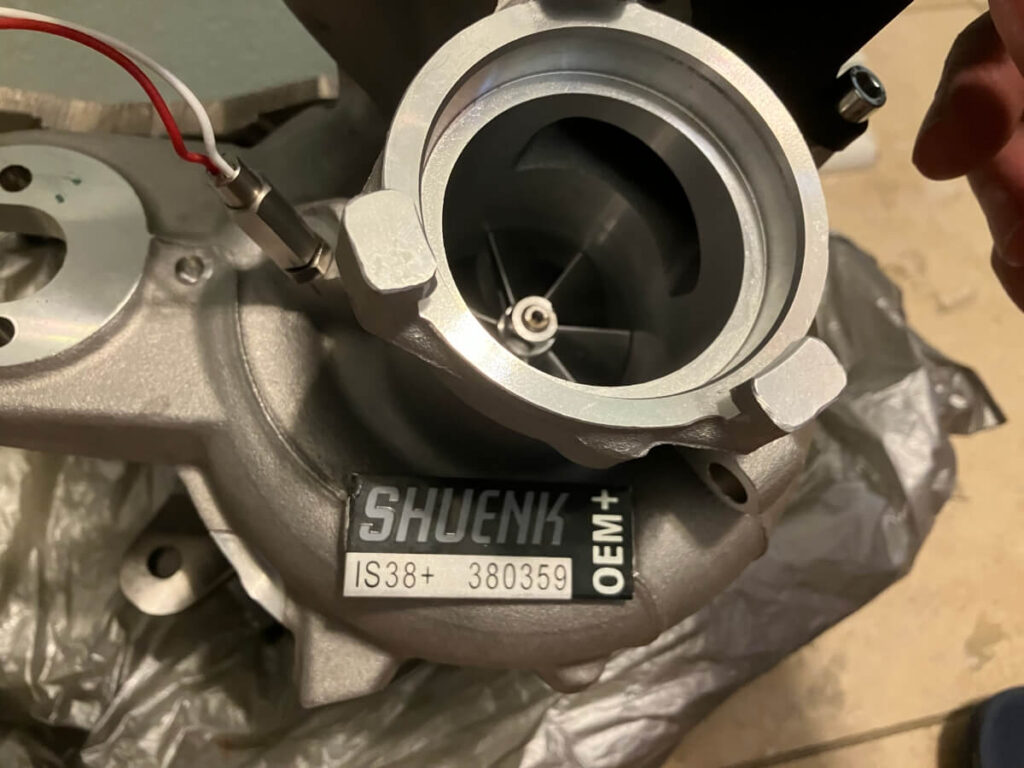
This sounded interesting, so I offered to install the “IS38++” in my GTI and collect data using my Stratified E30 tune.
The compressor housing would be modified to accept a Garrett Speed Sensor so that the rotation of the compressor wheel could be measured.
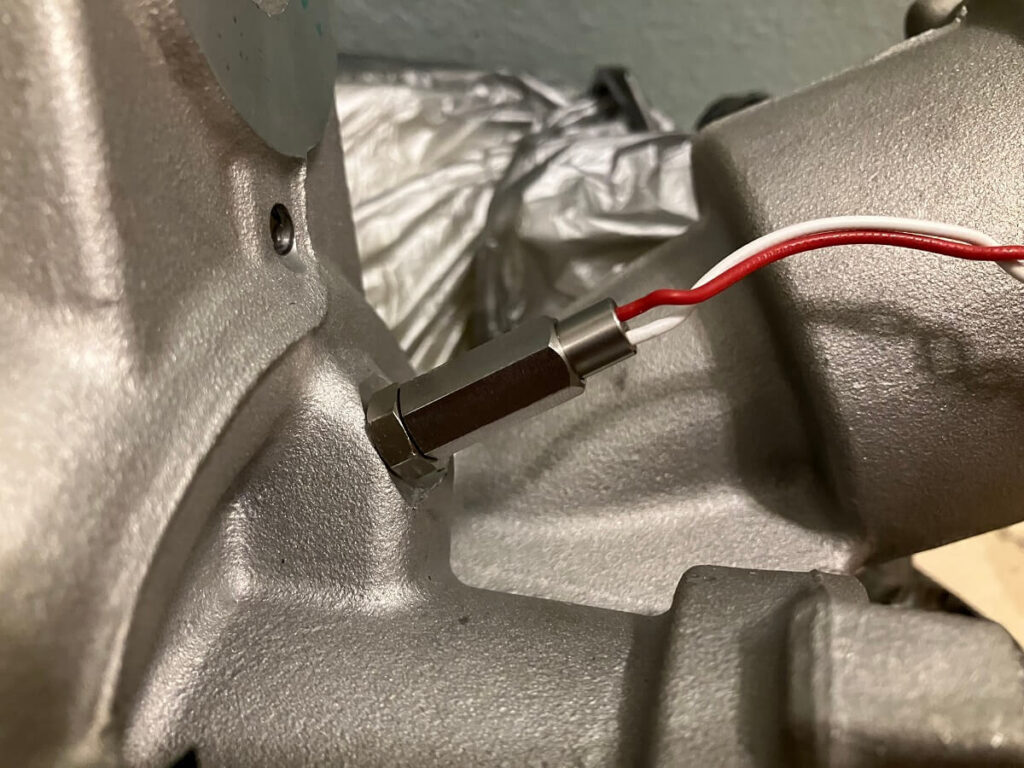
Shuenk IS38++ Install:
After receiving the modified turbo I set about installing it.
I decided to pick up a CTS Turbo wastegate actuator extension to make calibrating the turbocharger easier.
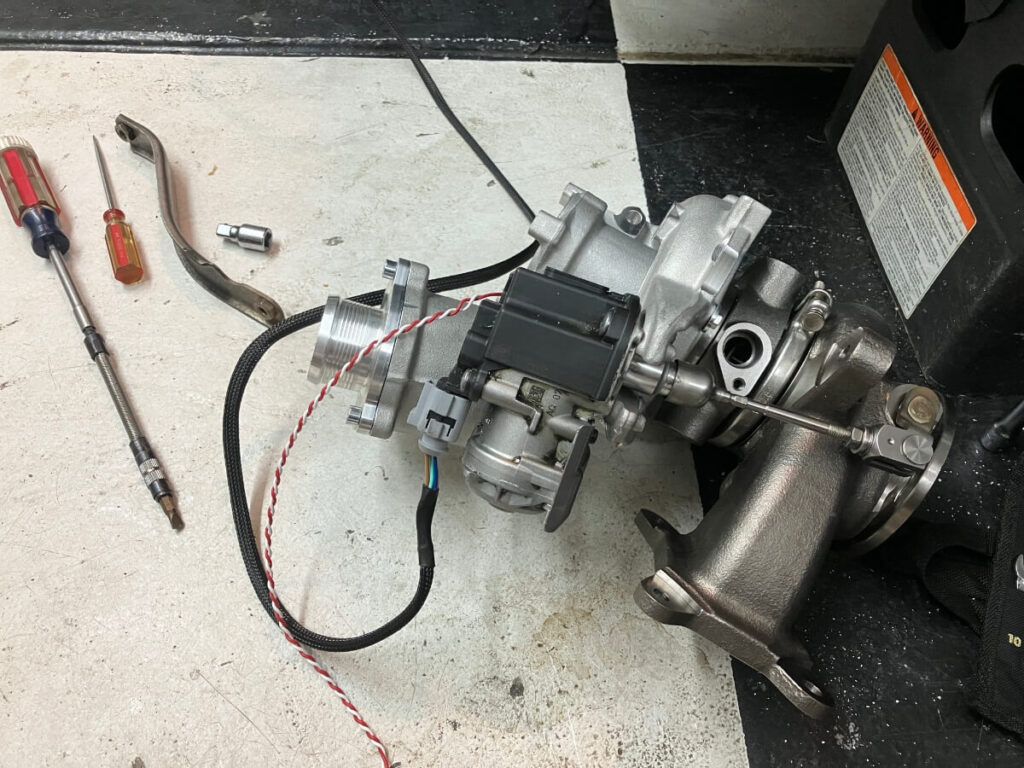
The calibration of the wastegate outside of the car was for naught because I had removed the compressor cover to adjust the Speed Sensor Probe. This had caused the clocking to be off, so I had to adjust that once it was installed, which then threw off the WG calibration.
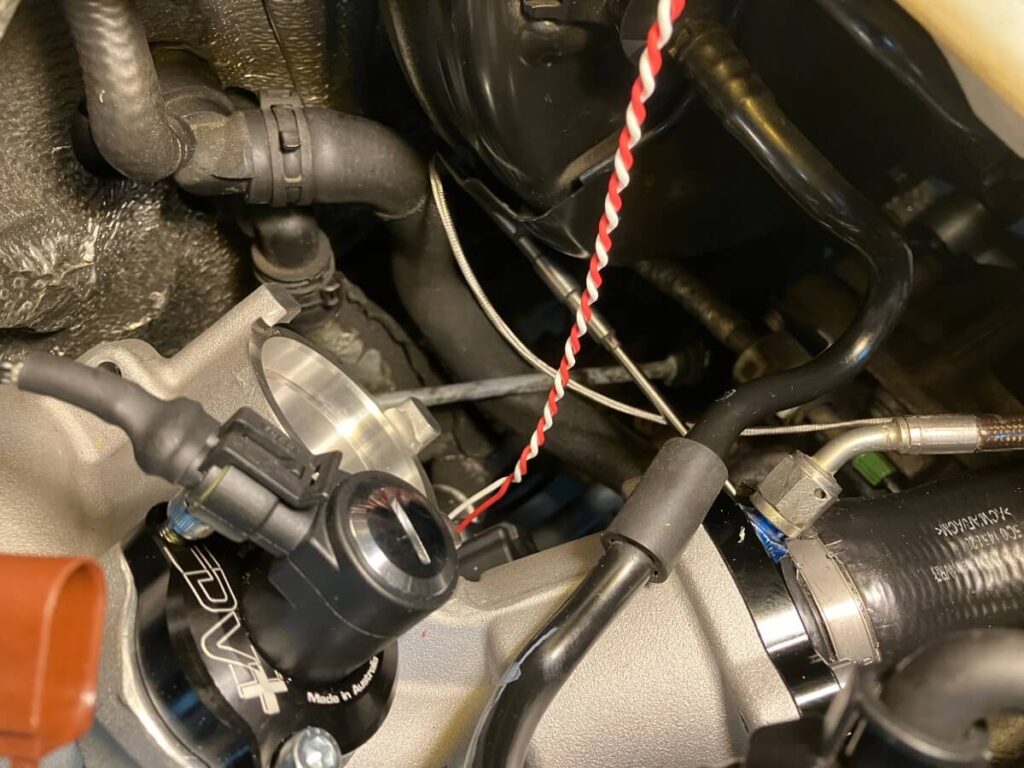
Once the turbo was installed I set out to collect data.
Operating Data:
A number of full-throttle pulls were made in third gear, and part of a pull was made in fourth gear to see how much sooner the boost curve would rise.
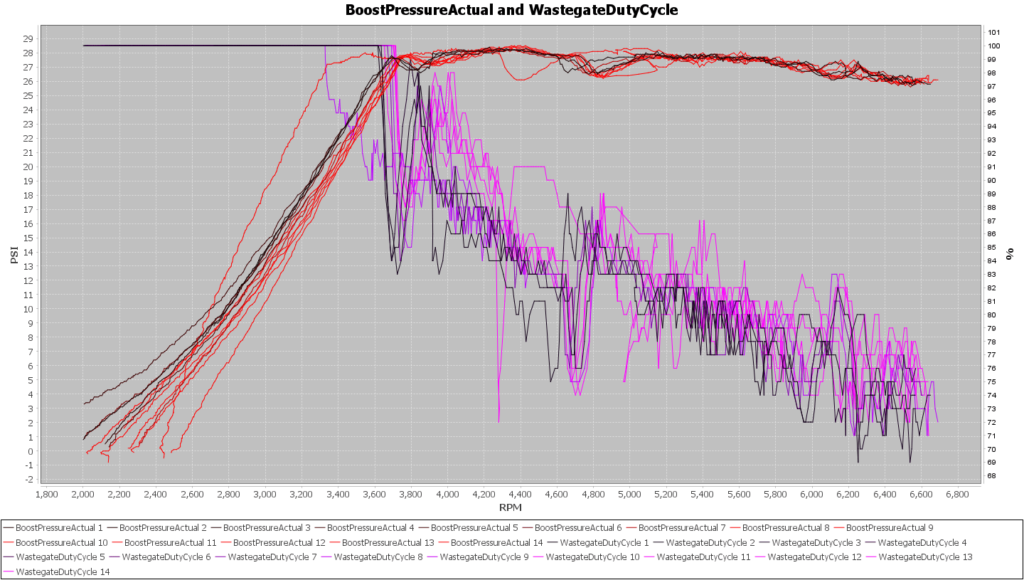
Compared to the IS38+ the “++” model has an easier time maintaining boost pressure near redline.
These two turbochargers are compared in the next chart: (Solid lines are the IS38++ and dashed lines are the IS38+)
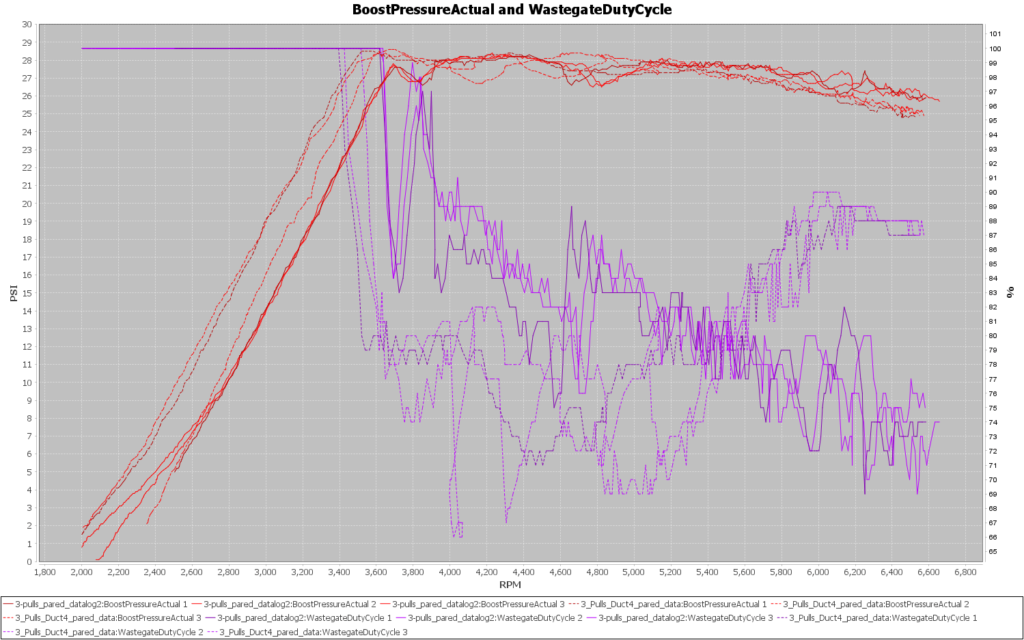
Measuring the compressor rotation speed was the purpose of installing the turbocharger and the next chart shows a couple examples of the compressor RPM during the pulls.
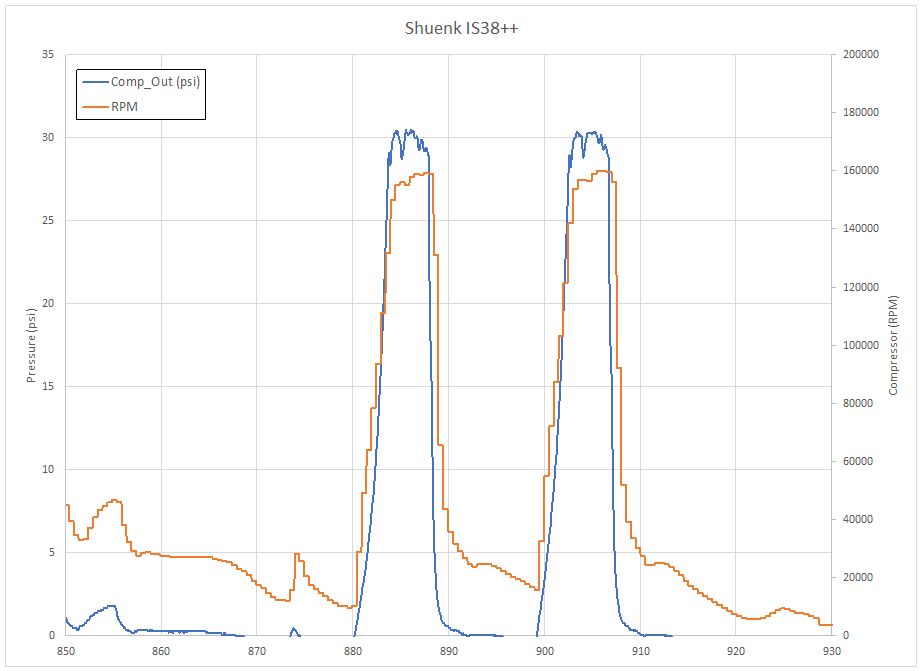
The next chart shows a comparison of the measured speed on my GTI compared with the modeled speed of an IS38 on a Golf R.
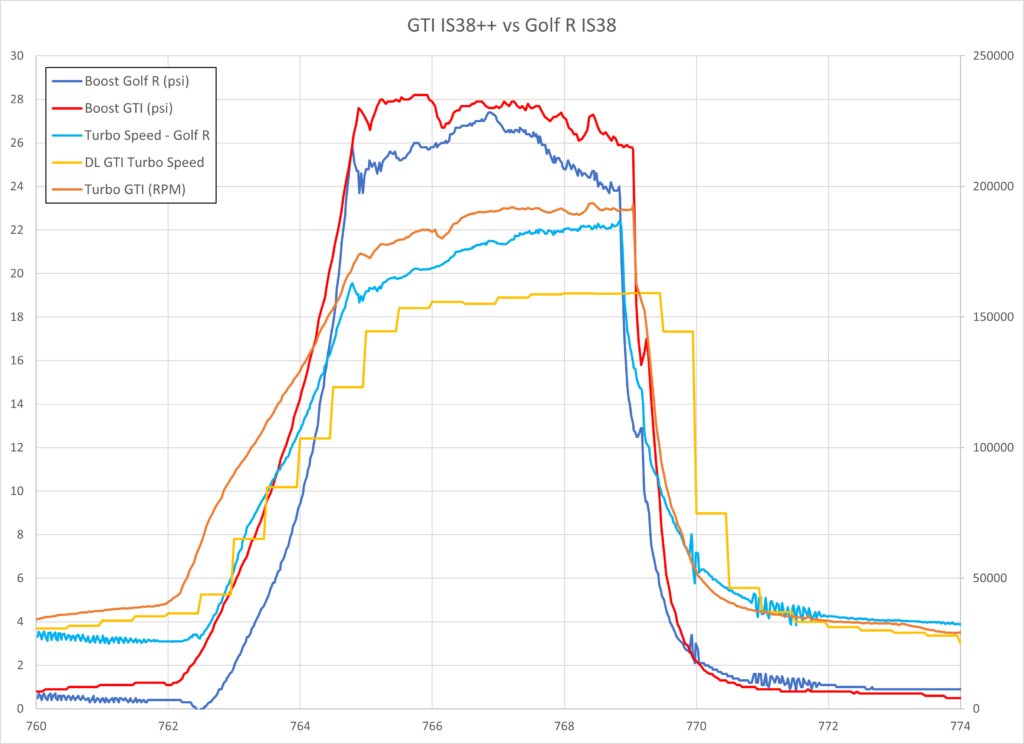
Although the GTI/IS38++ is operating at a higher boost pressure than the Golf R, the compressor speed is approximately 20,000 RPM less than the R/IS38.
Finally, I usually log the turbocharger discharge air temperature and this is shown on the next chart.
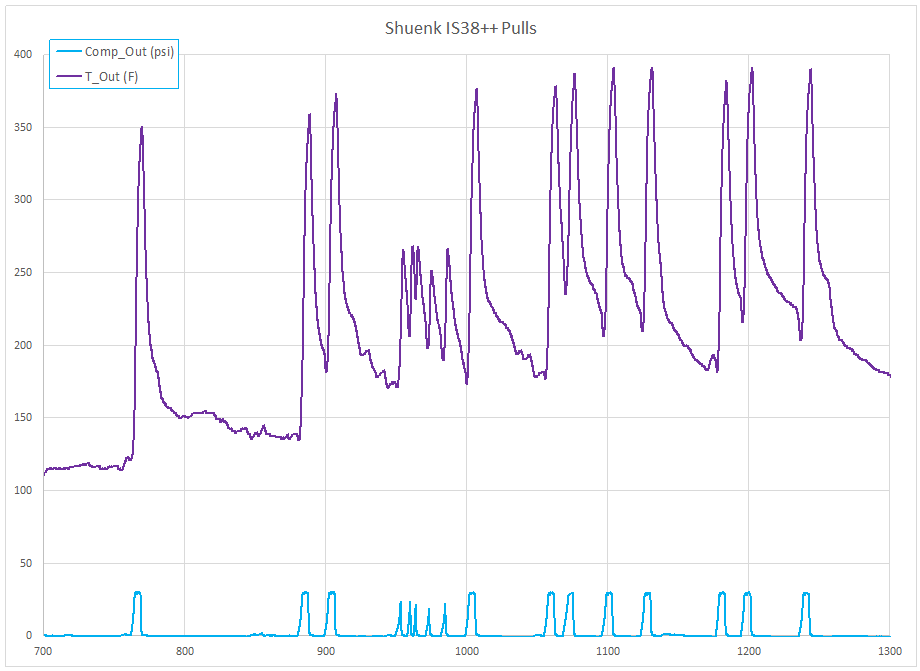
Unsurprisingly, operating at 28 psi generates hot discharge air.
Conclusions:
A prototype Shuenk IS38++ turbocharger was outfitted with a Garrett Turbocharger Speed Sensor and operated using my Mk7 GTI to record compressor rotation speeds.
Compared to a Golf R / IS38 modeled speed the Shuenk IS38++ rotation speed is approximately 20,000 rpm lower.
